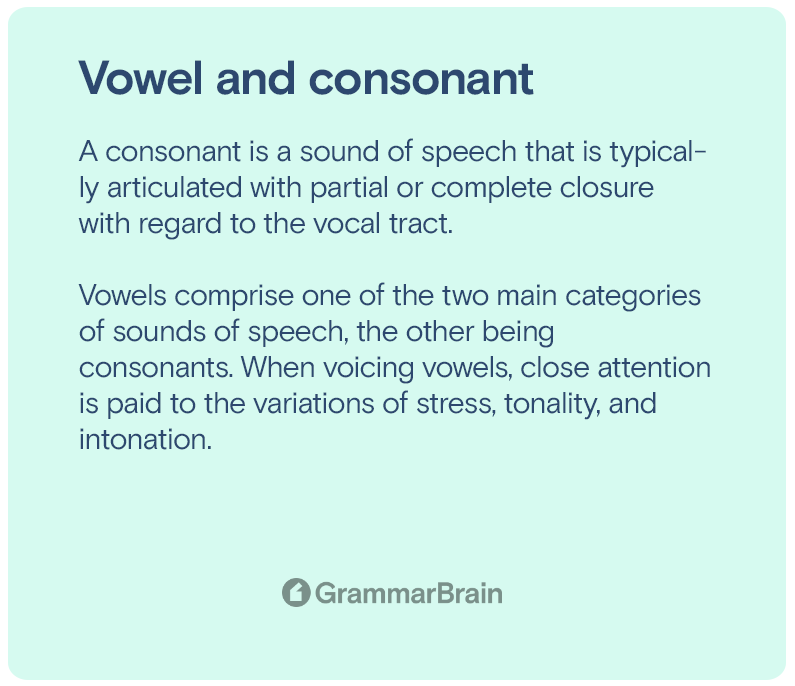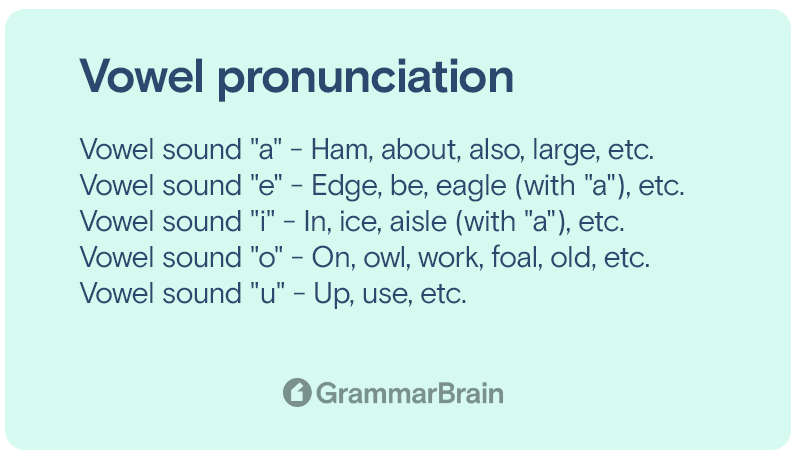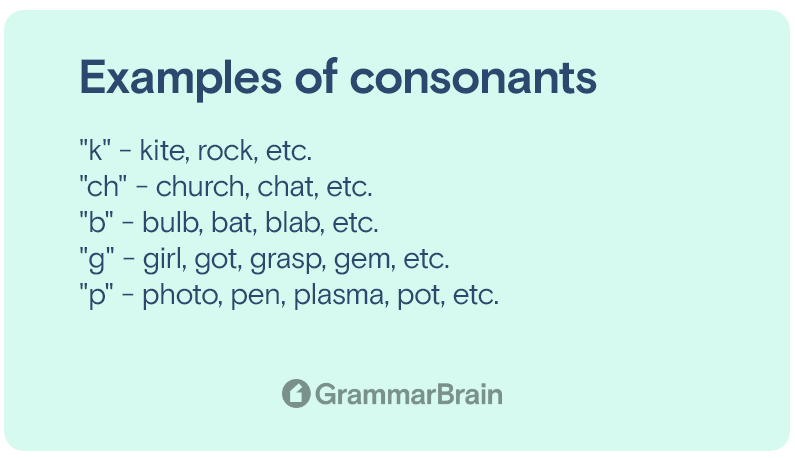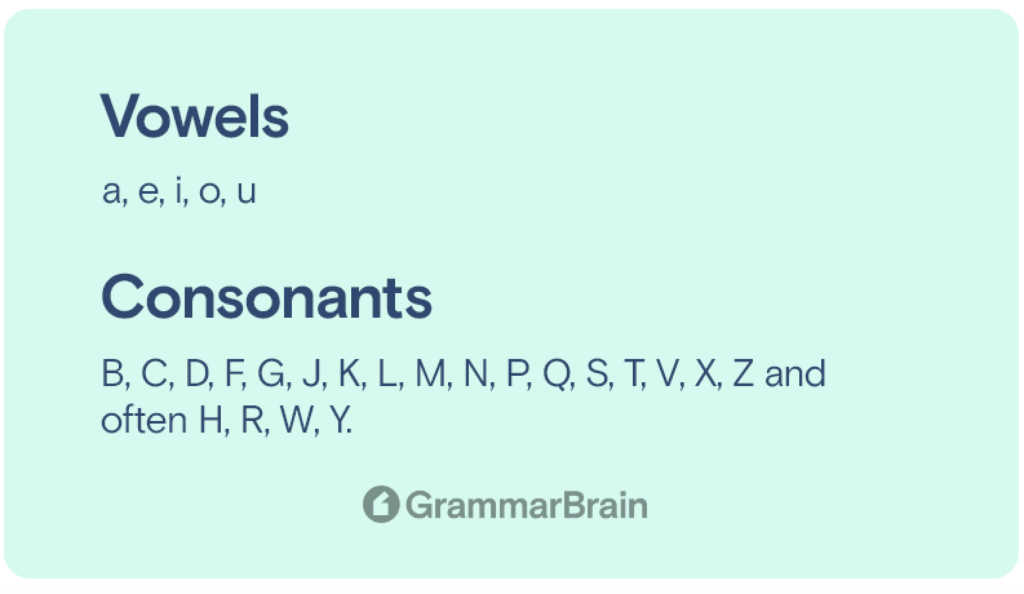What are vowels and consonants? Since time immemorial, an aspect that relates to vowels and consonants has been acknowledged. There exist dual complementary classes of sounds of speech. These are, broadly, consonants and vowels. While writing or speaking, in principle, certain letters represent consonants and the sounds they make. Others similarly represent vowels. Vowels and consonants have similar relevance and space in writing and speech in the English language.

What are vowels?
The simplest definition of a vowel is that it is a sound of speech, syllabic in nature. The sound of any given vowel is pronounced or made without any constriction of the vocal cords while speaking. Vowels may range in loudness and quality.
Vowels comprise one of the two main categories of sounds of speech, the other being consonants. When voicing vowels, close attention is paid to the variations of stress, tonality, and intonation. The written symbols, in terms of representation by letters of the alphabet, are a, e, i, o, u, and at times, y.
| Vowels | A, E, I, O, and U |
What are consonants?
While on the subject of vowels and consonants, both parts of phonetics and articulation, it is important to define the consonant.
A consonant is a sound of speech that is typically articulated with partial or complete closure with regard to the vocal tract. Consequently, all the letters that consonants represent in the alphabet are the ones that are not represented by vowels.
For instance, “p” and “b” are consonants. The lips are largely involved in their pronunciation. In a similar way, “t” and “d” are said using the frontal part of the tongue.
| Consonants | B, C, D, F, G, J, K, L, M, N, P, Q, S, T, V, X, Z and often H, R, W, Y. |
The sounds of speech
The concepts behind vowels and consonants are important as the number of sounds of speech in English exceeds the number of letters in the alphabet.
This is, in fact, true for many of the world’s languages. In terms of phonetics, vowels and consonants, and their intonations and modalities matter. This is why the IPA, or the International Phonetic Alphabet, exists.
Here, a system to assign an uncomplicated and unique symbol to each vowel and consonant has been devised.

Examples of vowels in words
In the English language, there are several possible vowel sounds, represented by the letters a, e, i, o, u, and y sometimes. There may be as many as 20 sounds of vowels, but in English, only 12 are used extensively. Some examples of vowels in words are below:
- Vowel sound “a” – Ham, about, also, large, etc.
- Vowel sound “e” – Edge, be, eagle (with “a”), etc.
- Vowel sound “i” – In, ice, aisle (with “a”), etc.
- Vowel sound “o” – On, owl, work, foal, old, etc.
- Vowel sound “u” – Up, use, etc.
Vowels and how they are pronounced depend on the letters appearing before and after them. It is also clear that some vowels, when used in combination with other vowels, produce a distinct intonation.
Is the letter “y” a consonant or a vowel?
In truth, the letter “y” is almost always used as a vowel. It may fall within the class of consonants, while you differentiate between vowels and consonants, but its purpose varies. Based on the position of the letter “y”, it represents both sounds of speech, that of a vowel or a consonant. For instance:
- “Y” is a vowel in these words – my, gym, story, bicycle, busy, system, etc.
- “Y” is used as a vowel in words that do not contain other vowels (gym). It is also used in words where “y” is at the word’s end (story). Yet other words use “y” as a vowel when the letter is between a syllable (system).

Examples of consonants in words
To reiterate, a consonant differs from a vowel by the fact that, while voicing a consonant, the breadth is completely or partially obstructed. Such is not the case with vowels. This is the main difference between vowels and consonants. Here are some examples of consonants in words:
- “k” – kite, rock, etc.
- “ch” – church, chat, etc.
- “b” – bulb, bat, blab, etc.
- “g” – girl, got, grasp, gem, etc.
- “p” – photo, pen, plasma, pot, etc.

Vowels – Key aspects
Note the primary takeaways when considering a vowel and its importance in the pronunciation of words:
- The sound of any vowel occurs when the flow of air through the mouth takes place freely, without restriction.
- The vowel sounds in English are represented by the letters a, e, i, o, and u.
- In words, a syllable is one part of the word which typically has a vowel sound.
Consonants – Key aspects
The following aspects should be noted while considering consonants for use and purpose in English:
- In simple terms, a consonant is a sound of speech, formed with the vocal tract partial or total closure.
- Consonants may be represented by letters in the alphabet and distinguished from vowels a, e, i, o, and u.
- Typically, vowels occur between two consonants to form a sound of speech in meaningful words.
| Vowels | Consonants |
| A, E, I, O, and U | B, C, D, F, G, J, K, L, M, N, P, Q, S, T, V, X, Z and often H, R, W, Y. |
Conclusion
The use of vowels and consonants may be complex to some and requires study before effective use. Nonetheless, while reading and writing, it is possible to grasp their understanding better. An important takeaway is that letters, when placed in combination with each other, can sound different and are used in various ways.
FAQs
1. How many vowels are there in English and what are they represented by in letters?
There are five vowels represented by the letters a, e, i, o, and u in the English alphabet. Sometimes the letter “y” is considered a vowel, according to its use and purpose.
2. What are the consonants in English, and do they have different sounds?
2. What are the consonants in English, and do they have different sounds?
3. How many vowels are in the alphabet?
There are 5 vowels in the alphabet. A, E, I, O, and U.
4. How many consonants are in the alphabet?
There are 5 vowels in the alphabet and the rest of the 21 letters in the alphabet are considered consonants.
Sources
- Vowels and Consonants – English Medium Learn English with English Medium
- Consonants and Vowels | Pronunciation Guide | Collins Education (collinsdictionary.com)
- Consonantal vowels Definition & Meaning – Merriam-Webster
- Consonants and vowels (Chapter 6) – Writing Systems (cambridge.org)
Inside this article
Fact checked:
Content is rigorously reviewed by a team of qualified and experienced fact checkers. Fact checkers review articles for factual accuracy, relevance, and timeliness. Learn more.
Core lessons
Glossary
- Abstract Noun
- Accusative Case
- Anecdote
- Antonym
- Active Sentence
- Adverb
- Adjective
- Allegory
- Alliteration
- Adjective Clause
- Adjective Phrase
- Ampersand
- Anastrophe
- Adverbial Clause
- Appositive Phrase
- Clause
- Compound Adjective
- Complex Sentence
- Compound Words
- Compound Predicate
- Common Noun
- Comparative Adjective
- Comparative and Superlative
- Compound Noun
- Compound Subject
- Compound Sentence
- Copular Verb
- Collective Noun
- Colloquialism
- Conciseness
- Consonance
- Conditional
- Concrete Noun
- Conjunction
- Conjugation
- Conditional Sentence
- Comma Splice
- Correlative Conjunction
- Coordinating Conjunction
- Coordinate Adjective
- Cumulative Adjective
- Dative Case
- Determiner
- Declarative Sentence
- Declarative Statement
- Direct Object Pronoun
- Direct Object
- Diction
- Diphthong
- Dangling Modifier
- Demonstrative Pronoun
- Demonstrative Adjective
- Direct Characterization
- Definite Article
- Doublespeak
- False Dilemma Fallacy
- Future Perfect Progressive
- Future Simple
- Future Perfect Continuous
- Future Perfect
- First Conditional
- Irregular Adjective
- Irregular Verb
- Imperative Sentence
- Indefinite Article
- Intransitive Verb
- Introductory Phrase
- Indefinite Pronoun
- Indirect Characterization
- Interrogative Sentence
- Intensive Pronoun
- Inanimate Object
- Indefinite Tense
- Infinitive Phrase
- Interjection
- Intensifier
- Infinitive
- Indicative Mood
- Participle
- Parallelism
- Prepositional Phrase
- Past Simple Tense
- Past Continuous Tense
- Past Perfect Tense
- Past Progressive Tense
- Present Simple Tense
- Present Perfect Tense
- Personal Pronoun
- Personification
- Persuasive Writing
- Parallel Structure
- Phrasal Verb
- Predicate Adjective
- Predicate Nominative
- Phonetic Language
- Plural Noun
- Punctuation
- Punctuation Marks
- Preposition
- Preposition of Place
- Parts of Speech
- Possessive Adjective
- Possessive Determiner
- Possessive Case
- Possessive Noun
- Proper Adjective
- Proper Noun
- Present Participle
- Prefix
- Predicate



